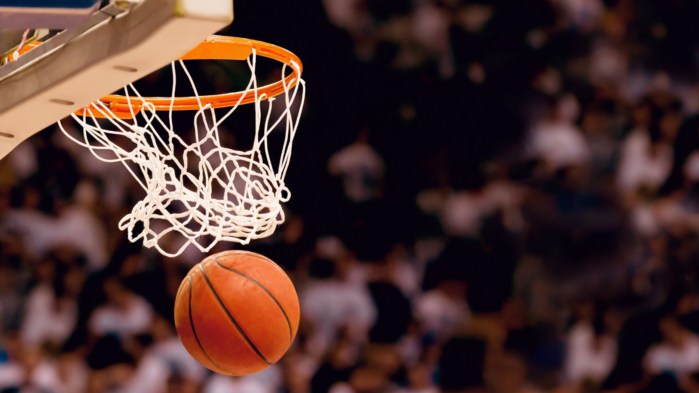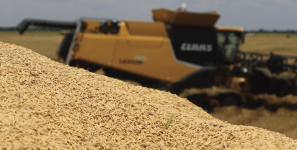Leslie Griffin is Principal of Boston-based Allinea LLC. She was previously Senior Vice President for International Public Policy for UPS and is a past president of the Association of Women in International Trade in Washington, D.C.
FROM FACTORY TO FINALS: THE SUPPLY CHAIN OF A BASKETBALL
The Rebound
It’s been a long journey to the NBA finals. The 2019-20 NBA season went on hiatus on March 11, and it was not until June that the NBA’s Board of Governors and Players Association finalized plans for 22 teams to return under stringent health and safety protocols and accompanied by measures to promote social justice. Even the ball the referee threw into the air for the opening tip-off on September 30 took a long journey before arriving at the “bubble” in the middle of Walt Disney World where the finals are being held.
Though not from Harlem, an official NBA basketball is itself a Globetrotter, the product of a supply chain that spans North America, Japan, China, Malaysia and Vietnam. Not unlike the sneakers worn by the Los Angeles Lakers or Miami Heat, basketballs are part of a global network of designers, suppliers, manufacturers, distributors and retailers. Kentucky-based Spalding, which has had exclusive rights to make NBA basketballs since 1983, depends on efficient cross-border logistics and exacting quality control to ensure consistency and performance.
Pick (Peaches) and Roll
Things started out a lot more simply. On December 1, 1891, in Springfield, Massachusetts, Dr. James Naismith hung two half-bushel peach baskets at the opposite ends of a gymnasium and set out 13 rules for “basketball” to his students at the International Training School of the Young Men’s Christian Association (YMCA), which would become Springfield College. From 1891 through 1893, a soccer ball was used to play the game.
The first basketball was manufactured in 1894, was made of laced leather, and was about four inches larger than a soccer ball in circumference. At the request of Naismith, it was created by Albert Goodwill Spalding, a former pitcher for the Boston Red Stockings and Chicago White Stockings, who had founded his namesake sports equipment company in 1876.
The inaugural season of the NBA did not come until 1946-1947. Chicago-based Wilson got the nod to make basketballs for the league from 1946-1983. In 1983, Spalding was given the exclusive rights to make NBA basketballs, but those rights will pass back to Wilson at the start of the 2021-2022 season. More on that to follow.
For now, Spalding is responsible for getting those orange pebbled-leather balls to the 30 NBA teams. What does that process look like? This piece from ESPN outlined the journey of a basketball from the factory to the finals, described below.
Following the Game Plan
Operating out of Chicago, Horween Leather Company is one of the oldest leather tanneries in the United States. Horween receives about 3,000 cowhides a week, largely from slaughterhouses in Iowa and Ontario, Canada. The hides then go through a three-week process of hair removal, tanning, embossing, finishing for color, durability and feel, and finally drying. A 1,000-ton press with German-made embossing plates gives the leather its distinctive pebbling. Each basketball takes about three to four square feet of leather. Four to five times per year, roughly 10,000 square feet of leather gets shipped to a manufacturing facility in China where balls are assembled.
Inside each ball, nylon winding made in Japan forms the outside of an inflated bladder (the balloon-like structure that holds air), adding structural integrity and durability. The inner sphere of the ball is covered with rubber from Malaysia and Vietnam. Eight leather panels are glued together by hand.
Once the balls are finished, they travel via ocean to Alexander City, Alabama for a three- to four-week testing process, where the balls must pass diameter, weight, and rebound checks. The NBA ball must be inflated between 7.5 and 8.5 ounces per square inch, and when dropped from six feet, the basketball should bounce 52-56 inches high.
In 2006, the NBA committed a flagrant foul and tried to implement polyurethane leather basketballs. The composite material was viewed by the sporting goods industry as the next new thing and the balls were less expensive to produce than real leather balls. However, the new feel and the difference in rebound height led the NBA Players Association to file two unfair labor practice charges with the National Labor Relations Board. The NBA quickly went back to real leather.
That’s the Way the Geopolitical Ball Bounces
While the contract with Spalding still had two years to run, in May 2020 the NBA announced that Wilson would be the official game ball starting in 2021-2022, the league’s 75th anniversary season. In the press release announcing the upcoming partnership with the NBA, Kevin Murphy, the General Manager of Wilson Basketball said, “Our commitment to growing the game of basketball on the global stage is at the heart of Wilson and our new partnership with the NBA.”
Of course, China is of major strategic importance to advancing that global growth. More than 600 million viewers in China watched NBA content during the 2017-18 season. Tensions between China and the NBA flared in fall 2019, when a tweet from a Houston Rockets executive supporting Hong Kong’s pro-democracy protesters prompted China to blackout NBA broadcasts and streaming in China.
Game three of the 2020 NBA finals coincided with the one-year anniversary of the tweet. While the finals had been streaming on China’s Tencent, state broadcaster CCTV’s decision to televise game five of the finals marked the first NBA broadcast in the country in over a year. Meanwhile, the NBA continues to face scrutiny for its relationship with China, which was only heightened in the summer of 2020 following reports of abuse at NBA-run Chinese basketball academies.
The league continues to try to navigate these issues, aware that there remains tremendous interest in the NBA in China and huge financial opportunity. Similarly, Wilson Basketball’s Murphy noted, “We have to perform in the U.S., but the growth will come from global sales. We have a presence in China, which is a very fragmented market (for basketball sales) and a big opportunity for us.”
Outside the United States, Wilson currently has rights to the Canadian Collegiate Athletic Association, the Basketball Champions League in Europe and the National Basketball League in Australia. As part of the deal with the NBA, Wilson will also be the official game ball of the Basketball Africa League.
Interestingly, while current NBA ball rights holder Spalding is owned by Fruit of the Loom (which is owned by Warren Buffet’s Berkshire Hathaway), the Wilson brand is part of Amer Sports Corporation, a Chinese-owned Finnish sporting company.
Jump Ball
Wilson has said that its NBA balls will have the same eight-panel configuration and that it will continue to source from the Horween Leather Company, which is already the sole supplier of leather for Wilson’s official NFL game balls. Other U.S. and global supplier decisions are unclear. Mindful of the 2006 synthetic ball fiasco, Wilson has said its engineers and product designers would work with NBA players to develop and approve the new basketball.
The new game ball will be introduced in fall 2021 for retail sales. The NBA and Wilson both hope their partnership will be a slam dunk, with trade bringing the pebbled ball to basketball courts around the world.
______________________________________________________________








Leave a Reply